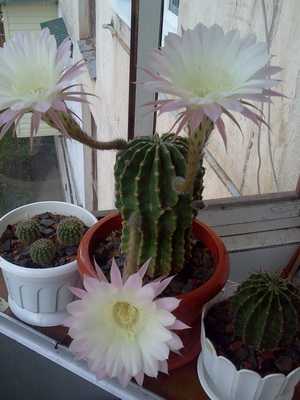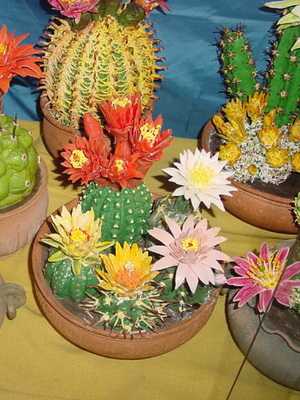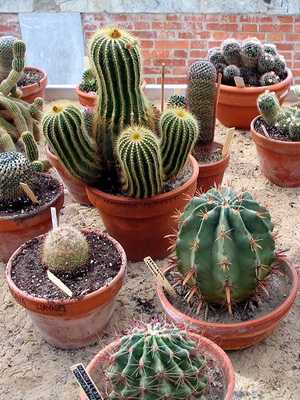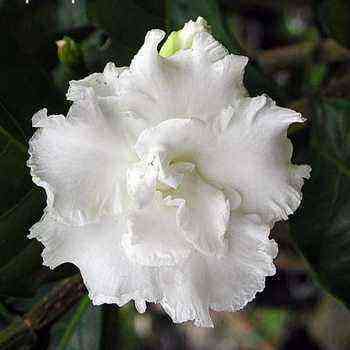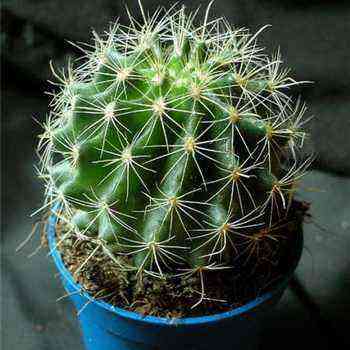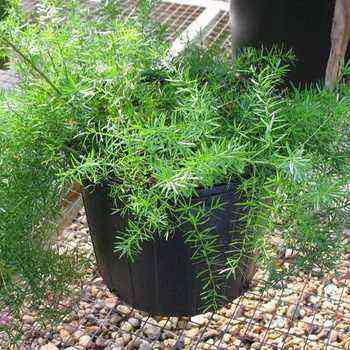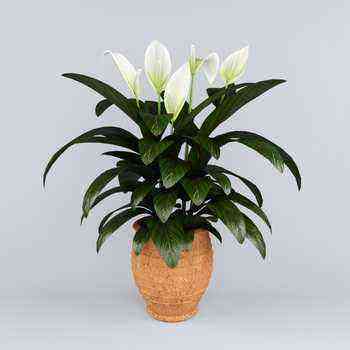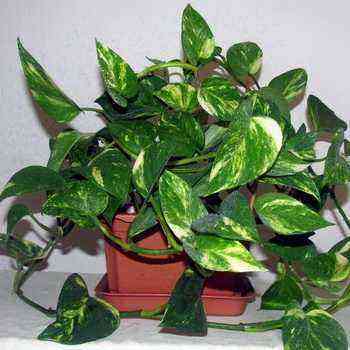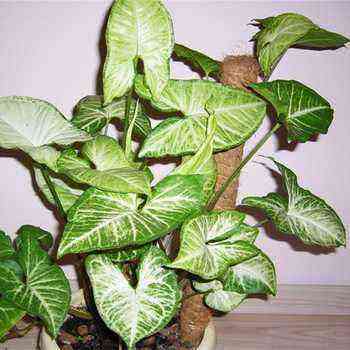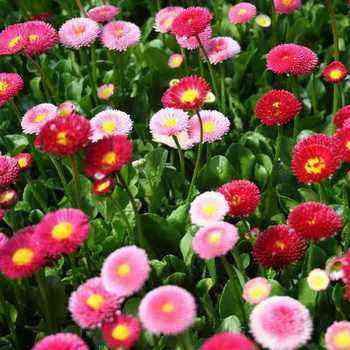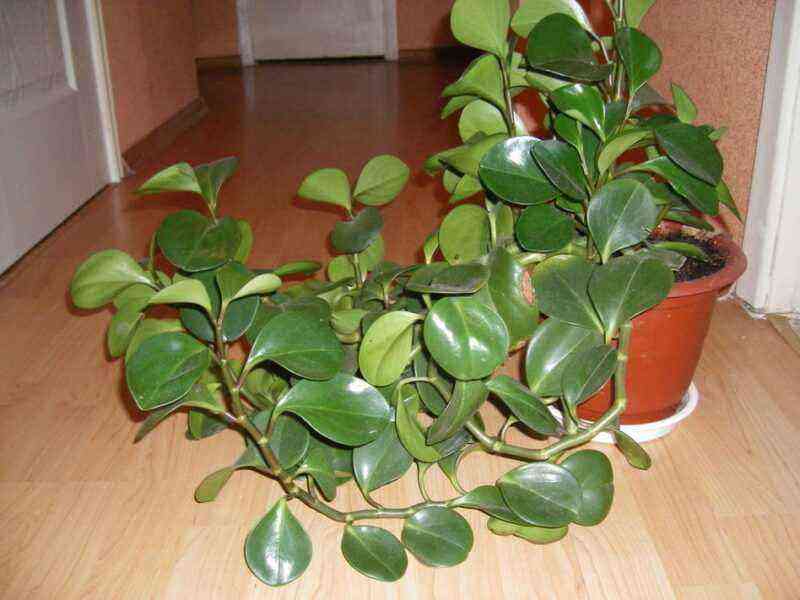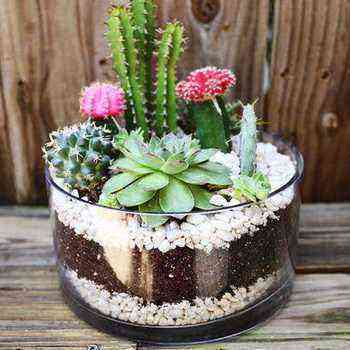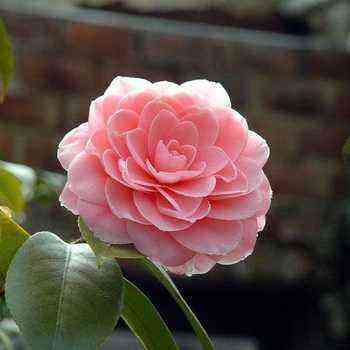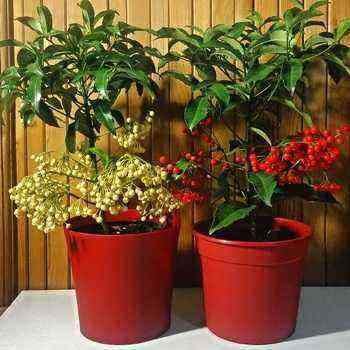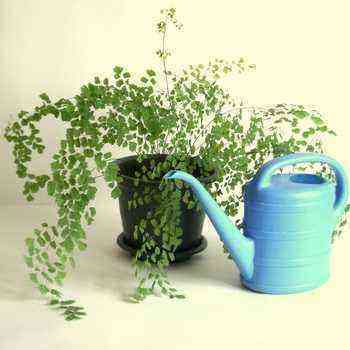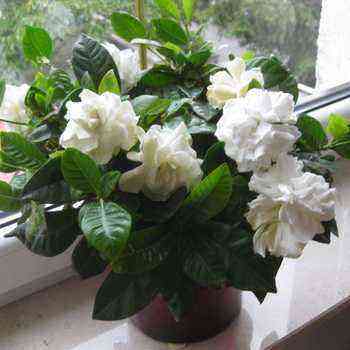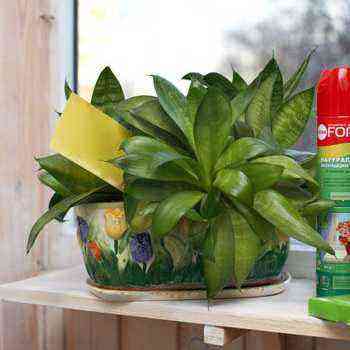
The technology of proper cultivation and care of cacti at home
The experience of growing and caring for cacti, familiarity with the relevant literature lead to a paradoxical conclusion: almost all cacti (like the overwhelming majority of other succulents) cannot be counted as indoor plants themselves. Of course, the cultivation and care of home cacti can be carried out in rooms – which is what millions of people do, but at the same time, firstly, you have to change the usual room conditions (highlight the plants, isolate them from dry and warm air, etc.), secondly, admirers of cacti still use every opportunity to “expel” their pets from the windowsills to the wild (outside the windows, balconies, hotbeds), and thirdly – and this is the most important thing – it is simply not possible to grow full-fledged specimens of most species in rooms … Only rare representatives of cactus, due to their biological characteristics, seemed to be sufficiently adapted precisely to the conditions of the dwelling and therefore became common in indoor floriculture.
In temperate zones (Europe, North America, Japan), where decorative succulent growing is most developed, the best results are obtained in greenhouses, but many species are grown all year round in open ground (even in northern Europe and Canada).
Thus, there are three main directions for the cultivation of cacti and other succulents for decorative purposes – indoor, greenhouse and garden. Each of them assumes its own, specific agricultural technology.
It is important to note that, no matter how different the methods of growing cacti at home or other conditions, they are all based on a few common biological characteristics of these plants. This is, first of all, slow growth and its pronounced periodicity. Almost all cacti, even giant tree-like cereus and lush epiphytic bushes with leafy shoots, grow relatively slowly in nature. Neither their root system, nor stem tissues are able to quickly assimilate a large amount of nutrients and water from the environment, and therefore cannot quickly form an increment. In addition, regardless of the place of natural growth, almost all cacti have pronounced periods of growth, flowering and, which is very important, dormancy.
The correct methods of growing cacti at home take into account, first of all, these are their features. It is curious that venerable cactus growers sometimes fiercely argue, defending their, often diametrically opposed ways of keeping and growing their favorite plants, but usually the conflicting parties have equally good collections, since their different methods are still based on understanding the nature of cacti. But most of the failures are explained precisely by ignorance of this nature.
In general, in cactus growing, a huge number of different rules, recommendations, methods and technologies for growing cacti have been accumulated, in addition, different rules and recommendations often contradict each other (especially regarding the content during dormant periods, the composition of substrates, watering, seed germination). This is not to say that formal methods are wrong, but when evaluating them, one must bear in mind two circumstances.
At first, before growing cacti at home, keep in mind that in nature these plants are to a certain extent plastic. Most of them are capable of growing in markedly different conditions. One and the same species can be found, for example, in the canopy of a tropical forest, and on bare, sun-drenched rocks. It was this ability that allowed many species to spread widely around the world (for example, the notorious conquest of the world by prickly pears). Further, the needs of cacti change markedly with age, and what is unacceptable for a two- or three-year-old seedling is quite suitable for a veteran plant (and vice versa). In addition, like other plants, cacti get used to certain conditions (for example, hardening can be used to train them to tolerate stronger sunlight or colder temperatures).
SecondlyWhen studying information on how to properly care for cacti, do not forget that, like any living organisms, these plants do not respond to any separate environmental factor (temperature, humidity, etc.), but to a complex of these factors. The addition of humus to the soil mixture under some conditions of watering, light and temperature can lead to rapid death of plants, and under others, it can provide excellent development.
Each serious cactus grower has his own set of methods for caring for cacti at home, developed by practice, and each such set has certain pros and cons. But, of course, there are some general principles of growing cacti, and unacceptable techniques.
How to properly grow cacti at home: choosing a place
Before you can properly grow cacti, you need to choose the right place for them. In the room, cacti always lack light and are too warm during the winter dormancy. In addition, even for these drought-resistant plants, the indoor air is dry. Therefore, the best place for them in the house is on the windowsill of the sunniest window, closer to the glass (the glass, of course, must be clean).
As you can see in the photo, when caring for home cacti, you need to put plants at the bottom of the window:
If there are shelves on the window, then the plants on the upper shelves only get side lighting, which leads to an ugly curvature of the stems. Usually, such an arrangement of cacti does not cause technical problems, since most other plants do not compete with them for these – near the glass itself – places.
Problems arise when the passion for succulents becomes so serious that because of dozens or even hundreds of pots with “hedgehogs” there are no more suitable places in the rooms. Then, for proper care of cacti, plants can be placed in the house only for the winter period, and in the spring-autumn time, find an opportunity to place them outside the apartment (in greenhouses in the country, on the balcony, in a greenhouse outside the window). During the winter dormant period, the abundance of light for most cacti is not so important, and they can be kept near the northern windows, on the upper shelves near the windows, and even in full shade.
What kind of pot is needed for a home cactus
Having decided to start breeding succulents, you need to imagine what pots are needed for cacti. The main requirement for a container for planting succulent plants is compliance with the size of the root system. The pot should not significantly exceed its volume in a straightened form, as a rule, a container of much smaller volume is chosen. If the plant has shallow roots that extend widely near the surface of the substrate, it needs a relatively flat pot. In flat boxes (bowls), cacti are usually sown and seedlings are planted. Conversely, cacti with deepening, especially tap and turnip roots, need deeper utensils.
The nature and development of the root system when transplanting cacti will also be appreciated by a layman, but it is better to check with reference books. Of course, when planting relatively rapidly growing cacti (large prickly pears, echinopsis, pereskii, epiphytes), the dishes can be more capacious – “for growth.”
What are the most commonly used cactus pots? Usually, plastic pots are taken for these plants. But this is not a dogma. Ceramics is also widely used, and you can use dishes from other natural and artificial materials. It is only important to understand the possible consequences.
One of the peculiarities of caring for cacti is that the state of the substrate in plastic and clay pots under exactly the same conditions will be different (in a clay pot, an earthen lump, naturally, dries out faster and cools more after watering). At the same time, in some cases, rapid drying is a plus (for example, during winter watering and for cacti with sensitive roots), in others it is a minus (for young, rooting plants or when watering in hot weather).
Which pot is best for a cactus
For a long time, answering the question “which pot of cactus is better”, experienced cactusists answered that for planting these plants, rectangular containers are required, which are convenient for a denser planting of succulents. However, modern design trends are gradually leading to the return of round tableware. Indeed, a spherical plant in a rectangular pot does not look perfect. Round pots also have functional advantages: firstly, both the aerial part of the cactus and its root system develop in all directions, filling the pot more evenly; secondly, when tightly installed, there is a lot of space between the rounded pots, which provides a more favorable mode of humidity and air exchange than in the case of rectangular containers standing close together.
When deciding which pot to choose for a cactus, do not forget that almost all succulents, even the most moisture-loving ones, do not like stagnant water. Therefore, cactus pots must have reliable drainage holes. Many cactus growers make several of them in the bottom, sometimes capturing the side walls.
Rapid drainage of water occurs in pots with a retractable bottom; they are also convenient for plant transplantation. A retractable bottom is easy to build in any pot by placing a crock or a plastic plate slightly smaller than the main bottom on the main bottom. Small legs under the outer bottom also help to avoid stagnant water in the bottom of the pot. Epiphytic cacti are especially sensitive to drainage deficiencies (that is, to stagnant water). For them, you can use “orchid” dishes (ampelous baskets).
It has been noticed that when taking care of cacti at home, succulents grow better and faster if they are planted together in one container. Of course, at the same time, neighbors are selected that require similar care. In this case, the conditions for the development of the root system are partly close to natural, and the biological environment, chemical composition, water and gas regimes of the substrate become more stable.
Pay attention to the photo – with decent care for cacti at home, such groups are very decorative:
In many ways, such groups make it easier to care for plants. Collective planting and purely collectible cultivation of cacti do not contradict – jointly planted plants representing forms of the same species or closely related species of the same genus, each with its own label, is a completely acceptable and convenient form of keeping the collection. However, one must also imagine the disadvantages of such a landing: difficulties in transplanting and manipulating plants – it is almost impossible to move, photograph, donate, sell, exchange, quarantine or treat one by one, separately from the rest.
The selection of dishes, of course, must also meet aesthetic requirements. Too bright or fancy pots interfere with the perception of the beauty of the plant itself. The cacti standing in different types and multi-colored pots look ridiculous next to each other. It is bad if the color of the pot does not match the color of the cactus flower, but the color of the container also has a functional significance: the strict and neutral for the perception of the plant, black color contributes to overheating of the roots in the sun, and white, on the contrary, reflects the sun’s rays.
Recently, pots are becoming more widespread, a vessel into which a pot with a plant is inserted. In this case, it is important to observe two conditions: the edges of the pots should not be significantly higher than the edges of the pot with a cactus, and there should not be water in the pots.
It is convenient to place cactus pots in common trays. They are easy to water from the bottom, as well as to transfer plants. If the pallet has high sides, the pots in it can be covered with coarse-grained substrate (pebbles, expanded clay, etc.). Such external drainage protects them from drying out too quickly (which is important especially when using clay pots), overheating or hypothermia of the roots. In addition, this technique will make the group of cacti more decorative.
How to properly care for cacti at home: feeding and fertilizing

We must not forget that cacti are not an annual, but a perennial culture. On perennial crops, a separate result of the impact of fertilizers for cacti at home is usually not traced. Again, we emphasize that it is not at all an achievement to grow an unusually large, wildly blooming, monstrously ringed specimen, which does not exist in nature! The collection (and aesthetic) value of such plants is low. But since the cacti in the collections are in completely unnatural conditions for them, fertilizers, in principle, are not prohibited.
Various compositions are used that are also used for other indoor plants, but with several reservations: much less often – usually 1-2 times during the entire growing season, in a lower concentration, with a relatively lower nitrogen content and preferably mineral. Organic fertilizers and feeding for cacti at home in the form of relatively weak (compared to those used for other plants) solutions can be applied only under hardy, fast-growing large-flowered succulents.
Light and temperature for keeping cacti in winter
One of the most important conditions for growing cacti and the normal development of most other succulents is an abundance of light. There are no shade-loving ones among them – there are shade-tolerant ones. They require as much light as possible, and sunlight. You can, of course, find an artificial light source that allows species from even the sunniest deserts to grow, bloom and bear fruit. And, nevertheless, they will differ from those grown in the sun not for the better.
The needs of cacti for warmth are closely related to light. Most of them require both a lot of light and a lot of heat. But in the temperate zone, these two factors come into conflict. The maximum amount of light can be given to plants simply by exposing them to the open air, but with the exception of mountain species, most cacti will be cold and unable to grow normally. Any protection, for example, glass, film, provides the necessary heat (and protection from precipitation), but eats up part of the light. Each amateur in his specific conditions must find the optimal ratio of air temperature for cacti and the amount of light.
Needing warmth, cacti, however, are not afraid of coolness (up to light frosts) and sudden temperature changes. Such species can be outside the home from spring to mid-autumn, and even longer when heated. Some of them tolerate frost and are even able to hibernate in the open air.
Having provided the right temperature for keeping cacti, it is important to remember that these plants do not like stagnant air – even greenhouses with the most thermophilic species must be ventilated. But drafts are also enemies of cacti. The place on the windowsill at the constantly open window is not for them.
The combination of a lack of light with a high temperature, especially in a wet substrate, can lead to irreversibly ugly growth. Therefore, with a lack of light, neither heat nor moisture is needed. This general principle determines the rules for placing cacti during winter dormancy. The main task in ensuring the required temperature for keeping cacti in winter is to protect them from overheating, while preventing hypothermia.
For most species, wintering at 5-15 ° C is suitable. The easiest way to reach the right temperatures for cacti in winter is to fence off the window sill with cacti from room heat with a screen made of film, glass, etc. Since the vegetation of most cacti in winter completely stops, there is no need for light.
Some amateurs use extreme methods – placing the plants in the cellar for the winter or shaking them out of the pots, just in the room, in this case the dryness and lack of light compensate for the effect of room heat that stimulates unwanted growth, and the state of dormancy is not disturbed (however, the plants can dry out a lot. and even dry out completely).
After wintering in low light conditions, cacti need to get used to bright sunlight. To do this, in the spring, the plants are shaded: they whiten the glass of a window or a greenhouse, cover it with tissue paper or a net. The popular thin white synthetic nonwovens have proven useful for spring (and summer) protection of cacti from sunburn. It is also necessary to close the walls of the pots facing it from the sun – the overheating of the root system is not as noticeable as the burn of the stem, but it also disrupts growth.
Watch the Cactus Care video for a better understanding of how to grow these succulents:
